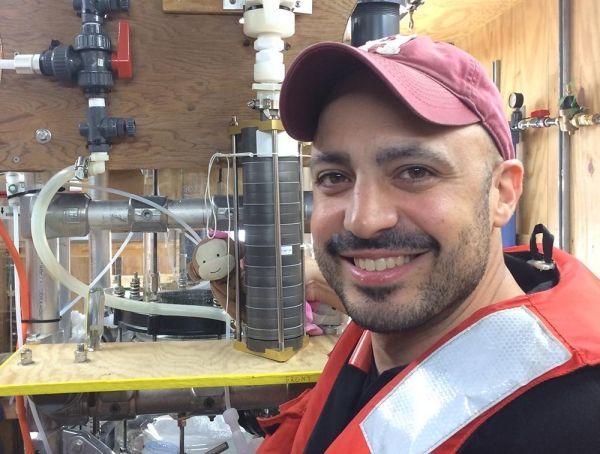A discovery that helps explain how organic matter produced by life thousands of years ago is ultimately removed from the sea has been published in Science Advances by Steven Beaupré of Stony Brook University’s School of Marine and Atmospheric Sciences (SoMAS) and a national team of scientists.
When waves crash in the ocean, they inject tiny particles into the air (called aerosols) that carry organic molecules more than 5,000 years old, the study finds.
Decades of measurements have revealed that nearly all of the organic matter dissolved in the oceans is surprisingly old – up to several thousand years. But scientists do not completely understand how this ancient organic matter is eventually destroyed. Beaupré and colleagues performed experiments to show that some of this ancient organic matter can be removed from seawater when wave-generated air bubbles burst on the ocean surface and inject aerosols into the atmosphere. By directly measuring the radiocarbon (14C) ages of the aerosols, they estimate that somewhere between 19 and 40 percent of the aerosol organic matter is at least 5,000 years old.
Continue reading at Stony Brook University
Image via Stony Brook University


